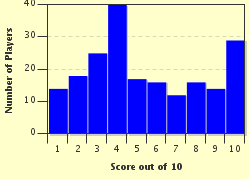Quiz Answer Key and Fun Facts
1. The 500 millibar level, which is the level above the Earth's surface where the pressure has decreased to exactly 500 millibars, is often referred to as what?
2. What is the point in the atmosphere called where the bottom of the first cloud is seen?
3. Why do meteorologists use the pressure level above the surface of the Earth called the 850 millibar level when looking for temperature advection (horizontal movement of temperature)?
4. In order for a tropical depression to strengthen, what type of upper-level conditions must be in place?
5. In the mid-latitudes, what is the most common type of precipitation-forming process called?
6. When air is lifted, it cools at either the dry adiabatic (no exchange of heat or energy with the surroundings) lapse rate or the saturated adiabatic lapse rate, depending on the relative humidity of the air parcel. Why is the dry adiabatic lapse rate always greater than the saturated adiabatic lapse rate?
7. Why is the jet stream found at higher altitudes in the tropics than at the poles?
8. It is possible for a cloud to extend into the atmospheric layer above the troposphere, called the stratosphere.
9. Geostrophic flow is an idealized flow that occurs away from the Earth's surface, usually at the 500 millibar pressure level. In geostrophic flow, the air flows parallel to the isobars (lines of equal pressure) as opposed to flowing at right angles to the isobars at the surface. What are the two balanced forces that make up geostrophic flow?
10. Which of the following IS NOT a factor that influences the amount of solar radiation received at the surface of the Earth?
Source: Author
melldavi
This quiz was reviewed by FunTrivia editor
crisw before going online.
Any errors found in FunTrivia content are routinely corrected through our feedback system.

